Though the potential for the commercial drone market is substantial, the policymaking around drone use has lagged behind technology. Current rules limit drone flights beyond visual line of sight, over people and at night. As national security concerns have been raised, the Commercial Drone Alliance recently hosted a Domestic Drone Security Summit, bringing policymakers and industry together to inspire collaboration and understanding. Building on that conversation and others, the alliance has suggested a framework for the federal government as it considers drone security issues.
1. Any Drone Security Legislation Must be Narrowly Tailored: The alliance appreciates the common interest that the government, industry and the general public all share in establishing reasonable limitations to protect against potential public safety and homeland security threats posed by unmanned aircraft systems (UAS). In this spirit, the alliance has provided the administration with comments on its draft legislation entitled “Official Actions to Address Threats Posed by Unmanned Aircraft Systems to Public Safety or Homeland Security.”
Though the alliance is generally supportive of the goals of the legislation, it believes that any legislation must be tailored narrowly. It should enable law enforcement to mitigate or confront drone threats but avoid unintended consequences that may restrict innovation; adversely affect authorized commercial drone flights; threaten privacy, civil rights or civil liberties; or otherwise cause harm.
2. Enable Technology Solutions to Policy Problems: There are many technology solutions to the security issues that we face. For example, UAS traffic management (UTM) systems in development now will open the airspace in a safe, secure and responsible way. We should seek to implement UTM in a timely manner, and the federal government must adopt further enabling regulations with UTM in mind. Moreover, as noted above, the federal government must diligently work to legally enable counter-drone technology solutions in an appropriately tailored way, which will necessitate changes in law and policy.
3. Require Hobbyists to Register Their Drones: During holiday season 2015, the Department of Transportation and Federal Aviation Administration (FAA) instituted an online registration requirement for all UAS operators, whether hobbyist or commercial. This requirement came about after a UAS landed on the White House lawn, and it was reported that hobbyists were hampering firefighting efforts in California and flying in the vicinity of manned aircraft. The registration requirement enhances the FAA’s ability to educate the public about airspace rules and enforce current laws and regulations that outlaw reckless flight.
The U.S. Court of Appeals for the D.C. Circuit recently overturned the rule as applied to model aircraft operators, holding that current law forbids the FAA from regulating hobbyists. Congress must close this legislative loophole and explicitly mandate that the FAA require hobbyists to register their drones, says the alliance. Without this legislative action, a significant number of drones will not be registered with the FAA, thereby undermining the FAA’s efforts to educate and enhance compliance.
4. Establishment of Remote UAS ID and Tracking Requirement: The alliance believes that establishing a comprehensive remote UAS identification and tracking system is a critical step to enable the ongoing and timely expansion of authorized commercial drone operations. A remote UAS ID and tracking system is a common-sense step forward for the drone industry, government and society at large in establishing reasonable controls to protect against potential safety and security threats posed by UAS, as well as to maintain the safety of the National Airspace System (NAS). The Commercial Drone Alliance believes that any remote UAS ID and tracking system should be built upon the following bedrock principles:
-Basic Requirements Common to All Drone Operations With Vehicles Weighing 250 Grams or More: In order to be successful and ensure compliance, any new rule must be simple and easy to understand for drone pilots, manufacturers, owners and public safety officials. Simplicity will promote compliance, and compliance promotes safety and efficiency of the NAS, enabling sustained growth and innovation to succeed. Any common-sense formula must also focus primarily on risk. To this end, the alliance believes that a basic weight threshold – 250 grams or greater, as with the FAA’s existing drone registration threshold – is appropriate. As we seek to grow the commercial drone industry exponentially, a basic and universal level of compliance is critical for the viability of successful UTM systems.
-Capability-Based Tiered Approach: Flights within the scope of 14 C.F.R. Part 107 or Section 336 of the FAA Modernization and Reform Act of 2012 should be required to meet a baseline requirement for remote UAS ID and tracking that applies – with limited exceptions, as noted below – universally to all drones weighing 250 grams or more. As the FAA expands operations through additional rulemakings or waivers, it is common sense that those operations ought to include enhanced remote ID and tracking requirements. For example, an operation beyond visual line of sight should comply with requirements above and beyond those imposed on an operation within visual line of sight.
Acknowledging the model aircraft industry’s history of safe operations, the alliance believes there should be a limited carve-out for model aircraft flights occurring within a registered Academy of Model Aeronautics field. Such a carve-out would enable hobbyist flights in approved areas without needlessly having to comply with a new set of regulations.
-Shared Responsibility for Operators and Manufacturers: Shared responsibility for the operator and manufacturer makes the most sense to enable enforcement of a remote UAS ID and tracking requirement. This mirrors the manned aviation context, in which both the manufacturer and operator share responsibility for ensuring the safety of airspace: Aircraft and aircraft component manufacturers are responsible for building safe aircraft and components, and operators are responsible for the safe maintenance and operation of aircraft. Consistent with current practice under the FAA’s registration rule and Part 107, the UAS operator should be responsible for inspecting the vehicle prior to operation to ensure compliance with a remote UAS ID and tracking requirement.
To the extent that compliance with any new rule would require specific equipage or technology for the drone, the burden must also fall on manufacturers to ensure that the drone has that technology or equipage installed or that such technology or equipage is available to operators for installation on drones that do not have it already.
-Flexible Implementation: Any new rule should be based on performance-based standards, rather than prescriptive regulatory mandates. As drone technology continues to advance at a rapid pace, any specific technology mandate will be quickly outdated. A prescriptive rule that mandates a particular technology would stifle innovation and disincentivize the development of new technologies that will make drones safer and more efficient. For this reason, the alliance supports a technology-neutral and interoperable approach compatible with any number of broadcast, network, software or ADS-B systems. The information broadcasted must also be easily accessible; the information transmitted must be receivable through a variety of currently available devices such as smartphones and other internet- or WiFi-connected devices.
-Data Privacy and Government: While it is critical that law enforcement have access to data when necessary, it is also critical that this authority remains appropriately tailored and in line with general privacy and legal principles and constitutional protections; it should be available to officials only on an as-needed basis. Accordingly, data should be accessible to law enforcement only where and when it is needed and limited reasonably by time and geography. The alliance believes that relevant tracking data should be retained for a reasonable period of time to allow public safety and other individuals to have access to information critical to investigations. An examination of data retention periods in the manned aviation context would be particularly instructive.
-Trusted Operator System: It is very important that authorized commercial operators have the opportunity to proactively gain the trust of public officials and the general public. Any new rule should include a trusted operator system similar in concept to the TSA Pre ✓ system, through which safe and responsible operators can voluntarily provide additional details about their organization and UAS operations to be vetted and evaluated.
Trusted operators should have the option of making information available to both public safety officials and members of the public. This information would help public safety officials with threat discrimination and provide a means to inform members of the public that a particular drone is being flown by a known safe operator and that the drone’s mere presence should not be a cause for alarm or concern.


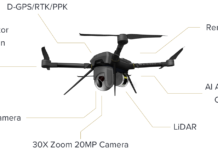
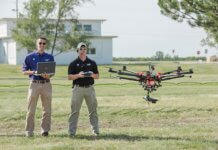



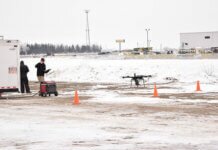
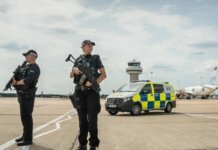

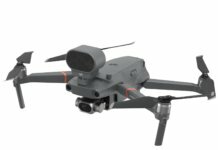

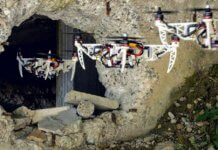

First of all. While security is always a concern, the problem lies that if we all get paranoid about the use of UAV’s, we might just all go home. Why? Simple. Do we outlaw cars? Fertilizer? Cell phones? or Guns. No. It’s not the TOOLs fault (UAV) its the person using it. Always has been, always will be. Oh, you can enact enough laws and regulations to not make it worth while, but why? The person is not going away, there will always be criminals and terrorist wanting to do their evil work. I support reasonable laws and regulations, but that won’t cure the problem. Lets not all get carried away with all the possible threats or ways that a UAV could be used against the public.
Very well said. In addition, do you have a drivers license, insurance, and do you follow the rules of the road? What is the difference for drones? In addition, requiring hobbyists to register their toys will make them more responsible when they are not flying them in a authorized air park.
I just passed my FAA license and enjoyed the education and information. But I feel the 14 CFR was not written with the industry in mind. It will have to be changed as the industry and drone owners proves themselves.